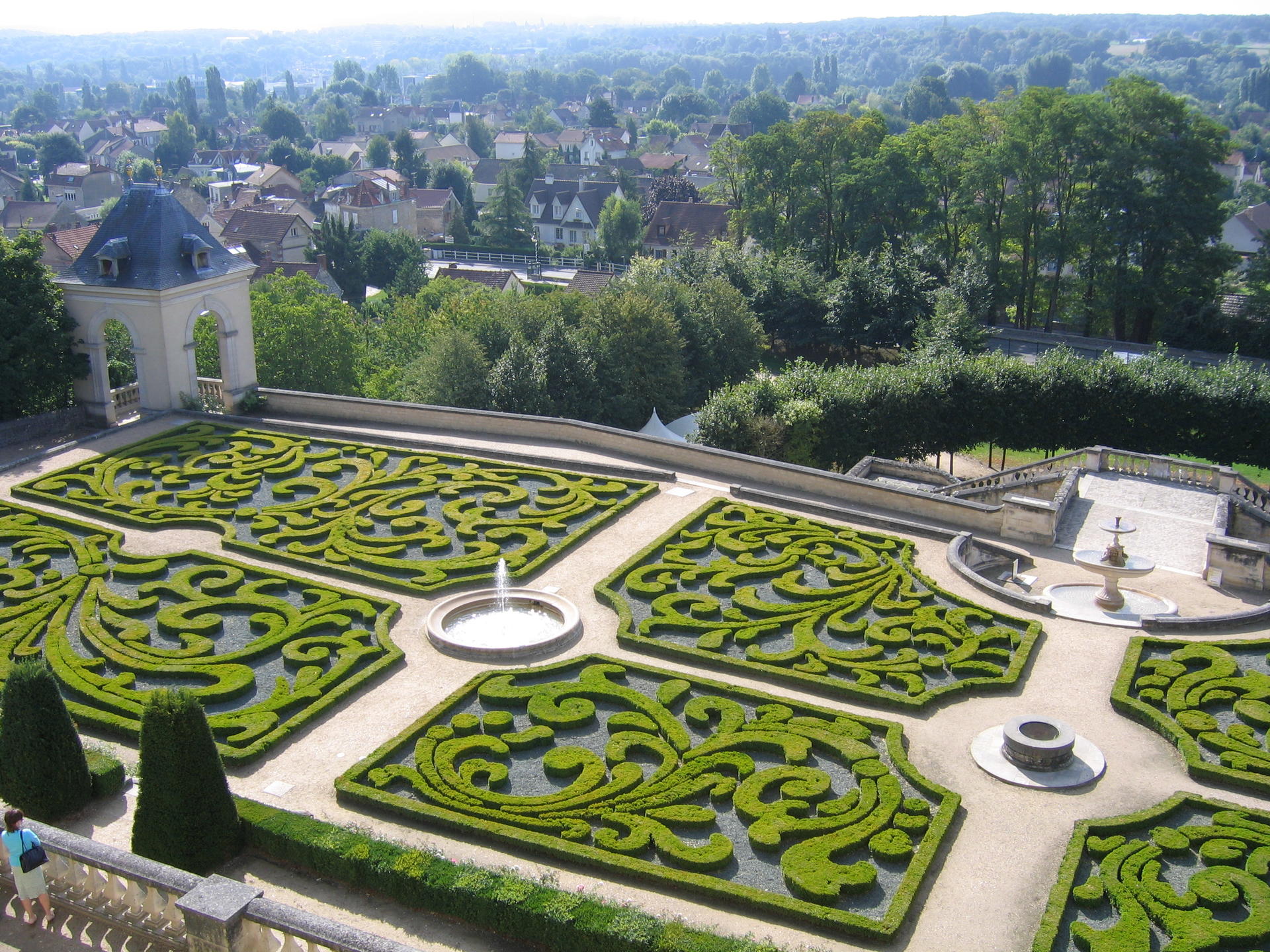The Park and Gardens
The Château d’Auvers overlooks the valley of the Oise, using its exceptional location and the lie of the land to great advantage in its spatial arrangement.
The chateau itself is surrounded by eight hectares of wooded parkland and gardens. Three types of garden draw their inspiration from this: the Italian Renaissance gardens, the French gardens and the English gardens.

The Italian Inspiration
The wide views and terraces are typical of Italian gardens. The chateau was built in the 17th century by Zanobi Lioni, a rich Italian financier belonging to the court of Marie de Medici. While the building itself was completely remodelled and transformed into a French chateau during the 18th century, the original layout of the terraced gardens with its flowerbeds and staircases was retained. The large upper and lower terraces are linked by a stone bridge which spans the rue de Léry. Along with the terraces, the size and layout of the plants creates screens and openings which give a cadence to one’s view of the countryside. Finally, the importance of water to the garden is underlined by the fountains and particularly the splendid 17th century shell covered nymphaeum. Still with an eye to geometry, the wooded parkland is criss-crossed by avenues in the shape of a star.
The French Influence
The terraces extend horizontally in a descending movement towards the Oise. The highest one embraces the entire site. The various components – flowerbeds, paths, fountains, plants – are arranged symmetrically around a great central avenue which runs from the origin down to the Oise. Following this grandiose perspective, the geometric and symmetric composition seats the power and authority of the owner in accordance with the style of French gardens which become a manifestation of power. The spaces defined by the layout of the walkways are filled in with box-hedge embroideries, flower beds and groves.

THE ENGLISH SPIRIT
The special feature of an English garden is to create a garden layout which is as natural as possible. In reality, it is carefully designed. This paradox between the desire for authenticity and artificial creation came to Château d’Auvers at the end of the 18th century. The park to the north was remodelled. The symmetric layout was replaced by curved walkways leading to glades and groves arranged as if at random.
The major changes of the 19th century
During the 19th century the town of Auvers-sur-Oise developed after the arrival of the railway in 1846. On the other hand, the 1813 land map shows the existence of a neighbouring property at the beginning of the century, Chateau Frileux, which has now gone. Its land was part of the current estate. New drives were laid out cutting the Clos du Château to the south. The D928 was built in 1839 and the rue Carnot in 1850. These new boundaries greatly modified the general appearance of the park.
The 20th century, a new history for the chateau and its park
The chateau was bought by the Val d’Oise regional council in 1987 who undertook its restoration, particularly the gardens which had been abandoned. Architects from Bâtiments de France and Historic Monuments used 17th and 18th century engravings to restore the gardens to their original glory as faithfully as possible.
